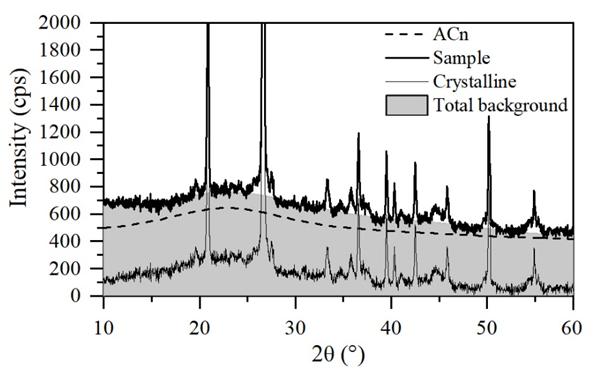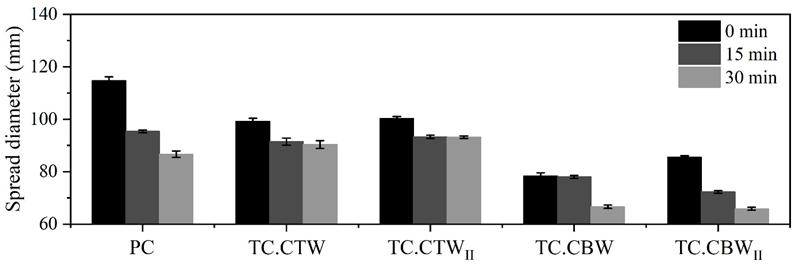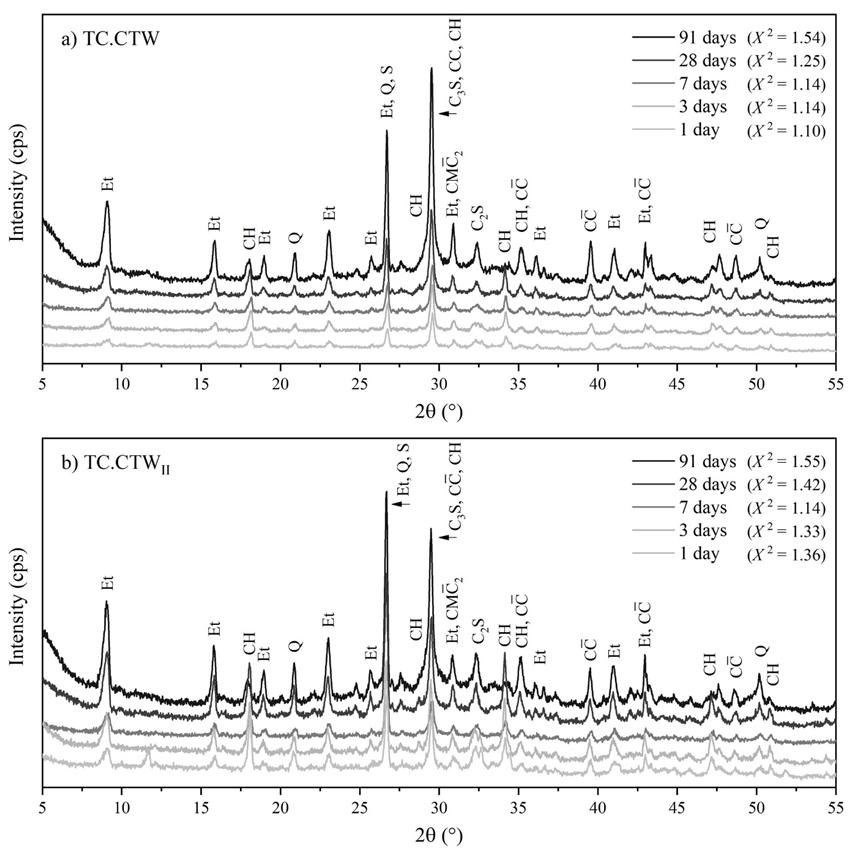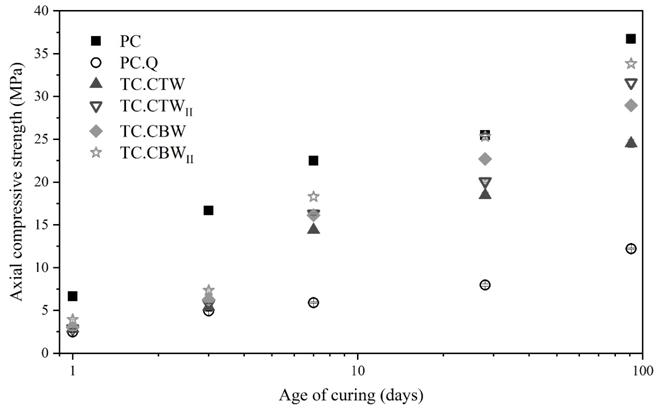Abstract
No research demonstrates the effect of combined waste raw materials as an alternative to natural sources in Limestone Calcined Clay Cement (LC3). In this context, this study aimed to evaluate the influence of the composition of ternary cements (TCs) containing industrial waste on their rheological and hydration properties. As raw materials, Portland cement and clay brick (CBW), clay tile (CTW), marble (MW), and phosphogypsum (PG) wastes were used. The rheological behaviour of the pastes was analysed by the mini-slump evolution over time and rotational rheometry. Hydration was evaluated by isothermal calorimetry and XRD/Rietveld. An increase in the specific surface area enhances the yield stress and plastic viscosity of the paste. CBW and CTW have pozzolanic reactivity, presenting an increase in the content of non-crystalline phases, including calcium silicate hydrate (C-S-H). The TCs reached at least 70% of the compressive strength of theHigh Early Strength Portland cement paste.The results suggest that CBW, CTW, MW and PG can be used as an alternative to reduce the clinker factor and decrease the environmental and economic impacts associated with extracting natural raw materials for cement production.
Keywords:
Ternary cements; Rheology; Hydration; Marble waste; Clay brick waste; Clay tile waste; Phosphogypsum

 Thumbnail
Thumbnail
 Thumbnail
Thumbnail
 Thumbnail
Thumbnail
 Thumbnail
Thumbnail
 Thumbnail
Thumbnail
 Thumbnail
Thumbnail
 Thumbnail
Thumbnail
 Thumbnail
Thumbnail
 Thumbnail
Thumbnail
 Thumbnail
Thumbnail
 Thumbnail
Thumbnail






 Note: CH: Ca(OH)2, Et: Ca6Al(OH)12(SO4)3.26H2O, C3S: Ca3SiO5, C2S: Ca2SiO4, Q: SiO2 and CC: CaCO3.
Note: CH: Ca(OH)2, Et: Ca6Al(OH)12(SO4)3.26H2O, C3S: Ca3SiO5, C2S: Ca2SiO4, Q: SiO2 and CC: CaCO3.
 Note: CH: Ca(OH)2, Et: Ca6Al(OH)12(SO4)3.26H2O, C3S: Ca3SiO5, C2S: Ca2SiO4, Q: SiO2, CC: CaCO3., CMC2: CaMg(CO3)2 and S: Al2SiO5.
Note: CH: Ca(OH)2, Et: Ca6Al(OH)12(SO4)3.26H2O, C3S: Ca3SiO5, C2S: Ca2SiO4, Q: SiO2, CC: CaCO3., CMC2: CaMg(CO3)2 and S: Al2SiO5.
 Note: CH: Ca(OH)2, Et: Ca6Al(OH)12(SO4)3.26H2O, C3S: Ca3SiO5, C2S: Ca2SiO4, Q: SiO2, CC: CaCO3., CMC2: CaMg(CO3)2 and Mu: Al2,41Si0,59O4,793.
Note: CH: Ca(OH)2, Et: Ca6Al(OH)12(SO4)3.26H2O, C3S: Ca3SiO5, C2S: Ca2SiO4, Q: SiO2, CC: CaCO3., CMC2: CaMg(CO3)2 and Mu: Al2,41Si0,59O4,793.

